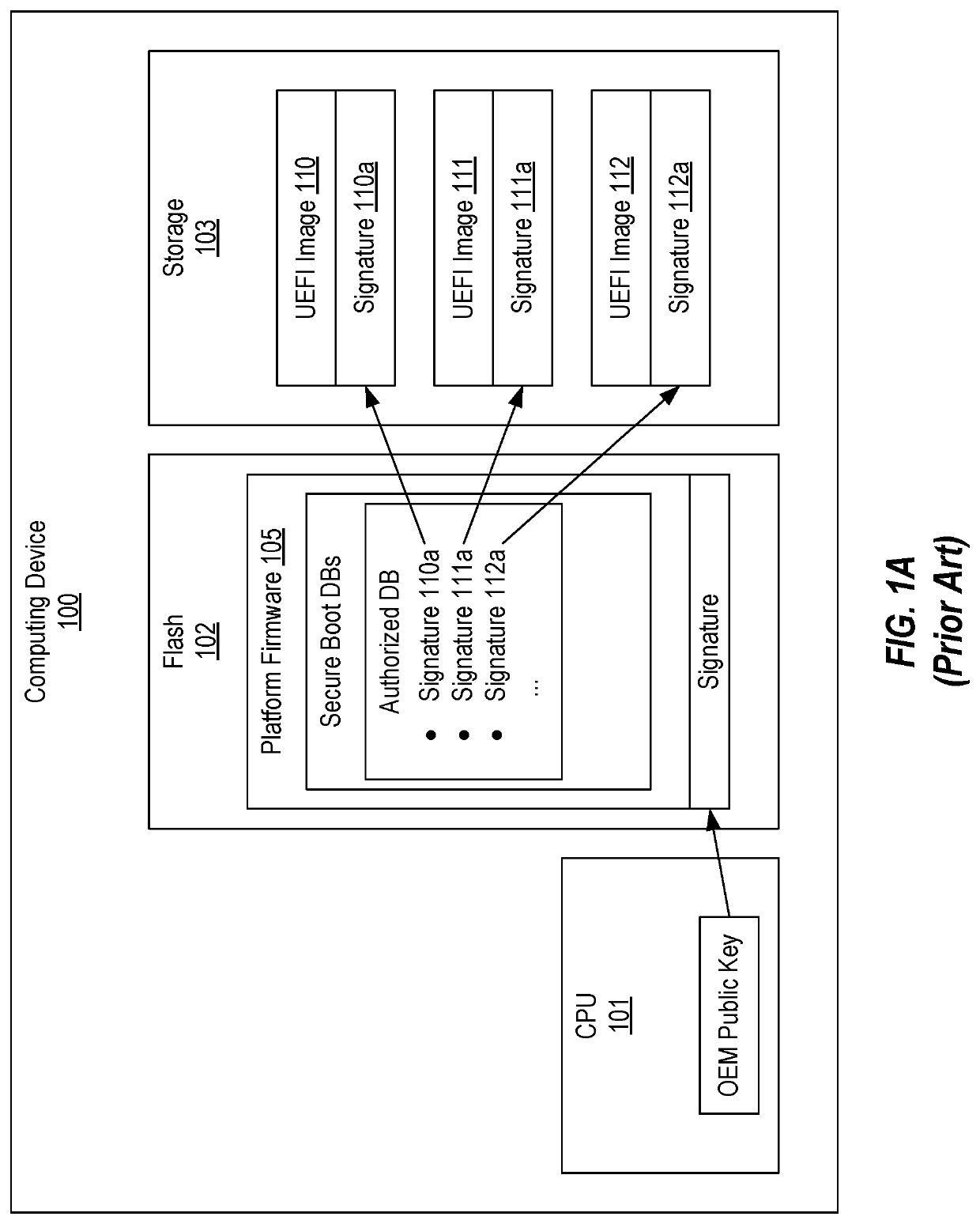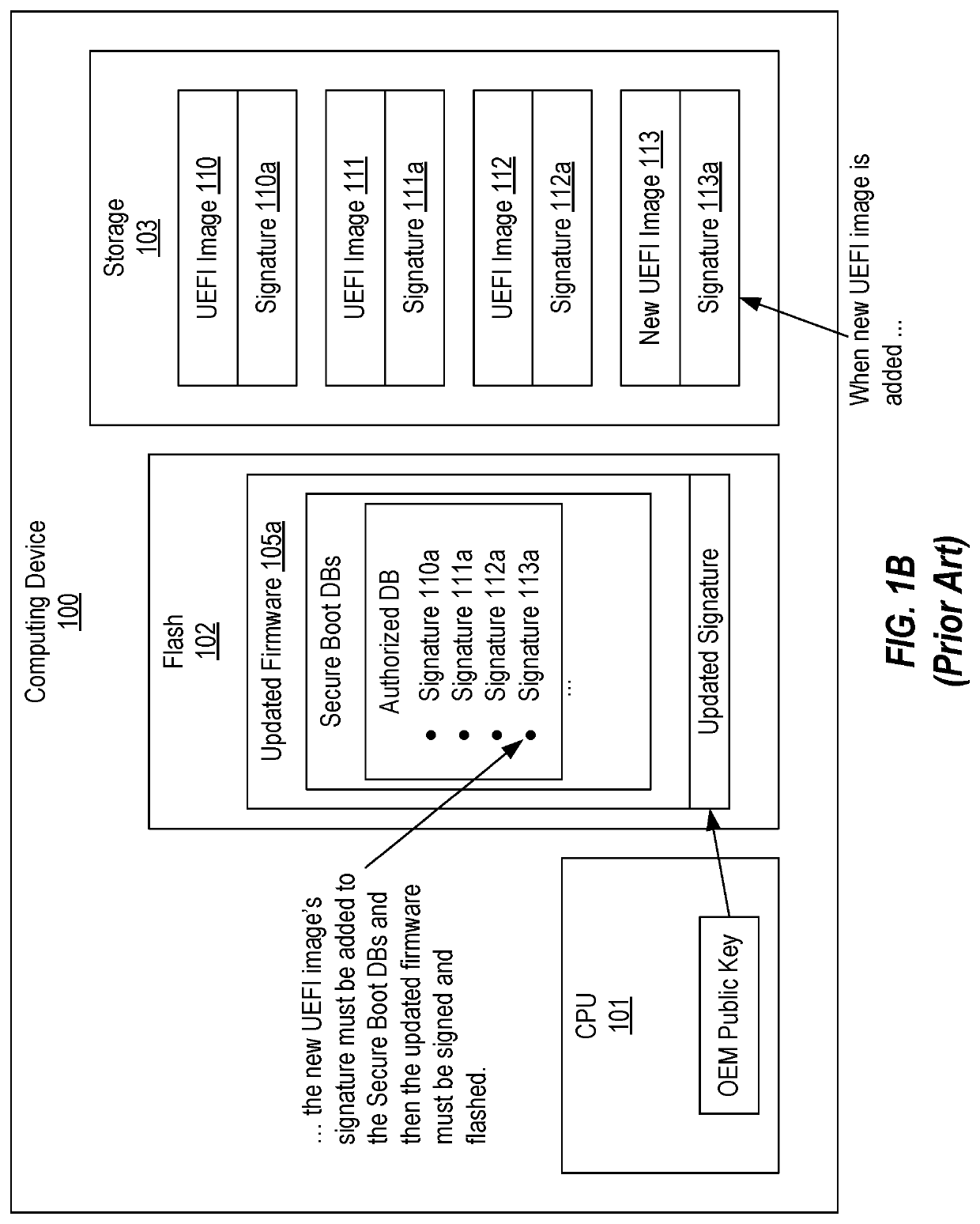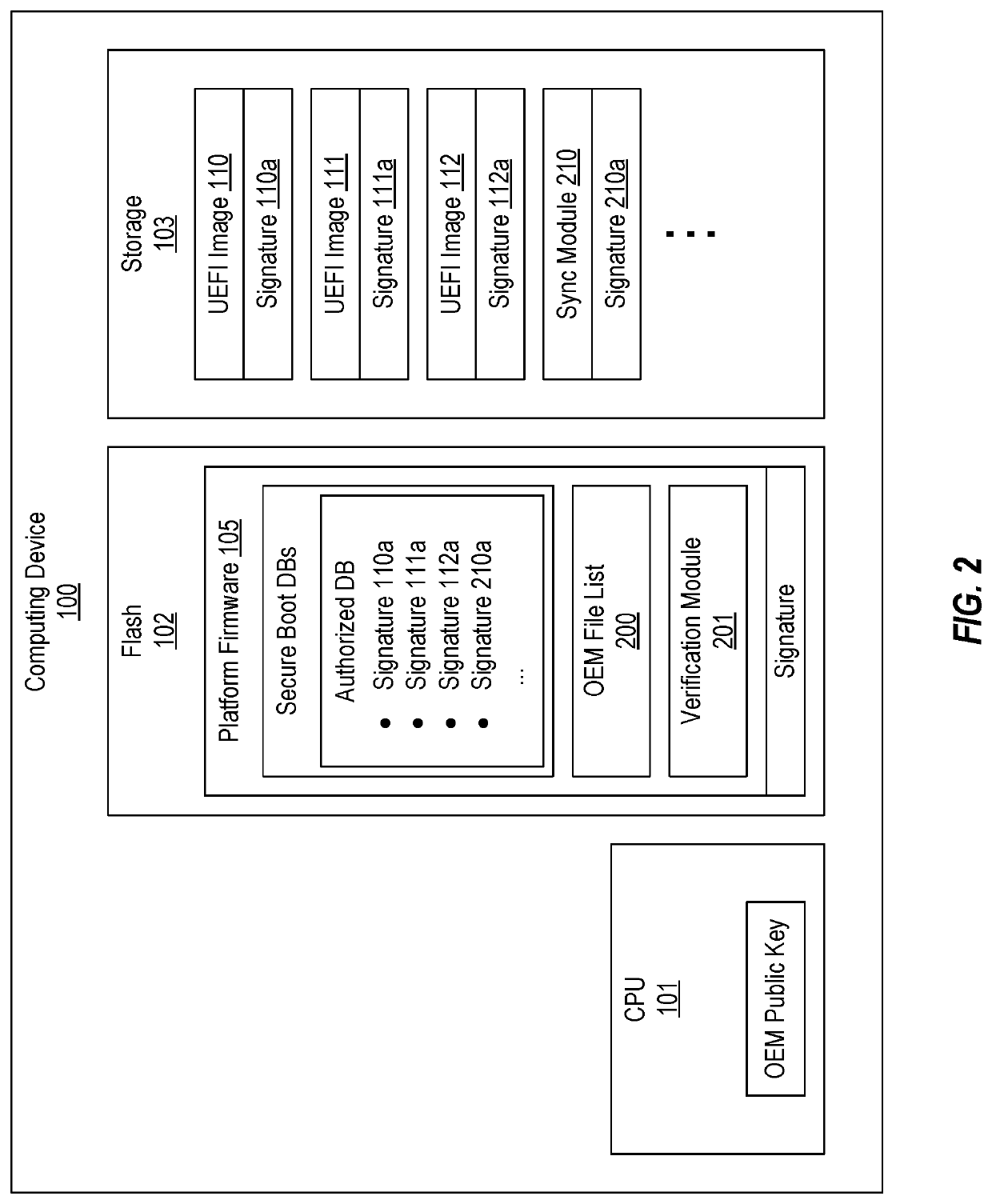Securely loading UEFI images at runtime
a security and runtime technology, applied in the field of secure loading of uefi images at runtime, can solve the problems of dxe module failing the pei verification process, unable to load, and the entire platform firmware, and achieve the effect of secure loading
- Summary
- Abstract
- Description
- Claims
- Application Information
AI Technical Summary
Benefits of technology
Problems solved by technology
Method used
Image
Examples
Embodiment Construction
[0022]In this specification and the claims, the term platform firmware should be construed as the firmware on a computing device that includes the UEFI Secure Boot databases. The term UEFI image should be construed in accordance with its definition in the UEFI specification and therefore includes UEFI applications, UEFI OS loaders and UEFI drivers. The term DXE module should be construed as a type of UEFI image that is executed during the DXE phase.
[0023]In accordance with embodiments of the present invention, a DXE module (or another type of UEFI module) can be added or updated on a computing device without requiring the platform firmware to be reflashed while also ensuring that the DXE module will be successfully verified as part of the Secure Boot process. FIG. 2 illustrates components that can be employed to accomplish this.
[0024]Similar to what is shown in FIG. 1A, when the present invention is implemented, computing device 100 will include CPU 101 that stores the OEM's public ...
PUM
 Login to View More
Login to View More Abstract
Description
Claims
Application Information
 Login to View More
Login to View More - R&D
- Intellectual Property
- Life Sciences
- Materials
- Tech Scout
- Unparalleled Data Quality
- Higher Quality Content
- 60% Fewer Hallucinations
Browse by: Latest US Patents, China's latest patents, Technical Efficacy Thesaurus, Application Domain, Technology Topic, Popular Technical Reports.
© 2025 PatSnap. All rights reserved.Legal|Privacy policy|Modern Slavery Act Transparency Statement|Sitemap|About US| Contact US: help@patsnap.com



